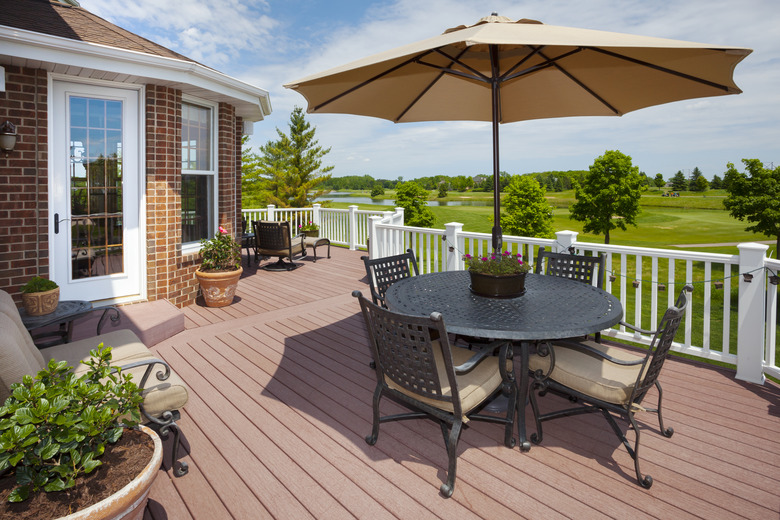How To Landscape Under A Deck
We may receive a commission on purchases made from links.
Are you wondering how to landscape under a deck with limited sunlight? Landscaping the area properly can help with several issues that come with having a high deck. Not only does landscaping give the area a polished look, but it can also help control weeds that sometimes thrive under your deck and create a mess.
Proper deck landscaping can also help prevent erosion that can lead to issues with basement leaks and water problems. Landscaping under a deck can solve these issues and help improve the overall curb appeal of your home.
How to Landscape Under a Deck
1. Remove Existing Growth
Clear out any existing foliage under the deck to start with a clean slate. Typically, weeds and other foliage will be present in these areas. Pull all the weeds, including the roots, to prevent them from growing back after you plant. Use a garden rake to remove any other debris that may be under the deck. Do not use herbicide to remove the weeds.
2. Install Landscaping Fabric
Lay landscaping fabric down on the prepared ground. This will help prevent the formation of additional weeds and aids in having a clean space underneath the deck that doesn't look overgrown. Cut the landscaping material to fit and make sure to leave an additional inch or two of fabric to go up against the house. Otherwise, weeds will grow in the space between the foundation and the fabric. Overlap the fabric by a few inches where the seams meet. You can use landscaping staples to help hold the fabric in place.
3. Choose Plants Suited for Shade
Select shade loving plants since the space under your deck likely doesn't get a lot of direct sunlight. Even though the area under the deck may appear dark, it still receives some light. Plants that thrive in this environment include hostas, coleus for foliage plants, and impatiens and begonias for flowering plants. These can be mixed to create a visually pleasing area under your deck.
4. Prepare Landscaping Fabric for Planting
Cut out holes for the plants in the landscaping material. The holes should be large enough for the plant to grow, but not too large to allow for weeds to flourish. It's important to look at the information that came with your plants to see how far apart they should be planted before cutting these holes. Follow the planting directions on these plant tags, taking into consideration the size when the plant is full grown.
5. Plant the Flowers
Place the plants in their holes. Plants should be planted to the depth of the pot that they come in from the greenhouse or plant store. Water the soil and fertilize if necessary. After that, water as directed by the information that came with your plants.
6. Add Rock or Gravel
Pour rock or gravel over the landscaping material and around the plants. This will help in two ways. First, it helps anchor the landscaping material to the ground and hide the material. Second, it helps with drainage underneath the deck. The gravel will help direct the flow of water away from the foundation of the house and assist in preventing muddy spots that can encourage erosion.
